|
|
|
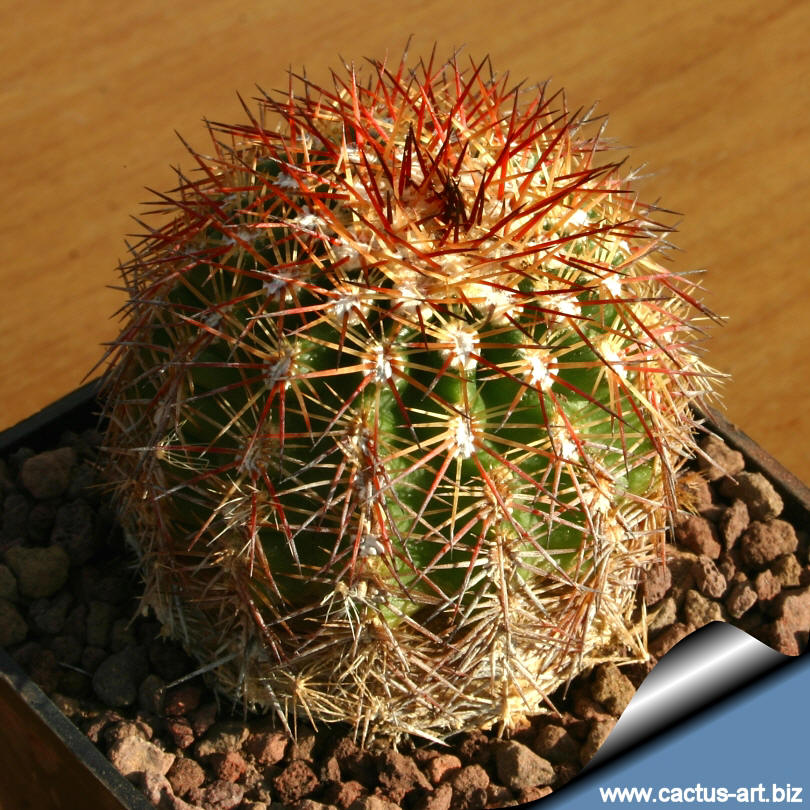
The flowers are yellowish-green to dark brick-red , and grow down on the
sides forming a band around the middle.
|
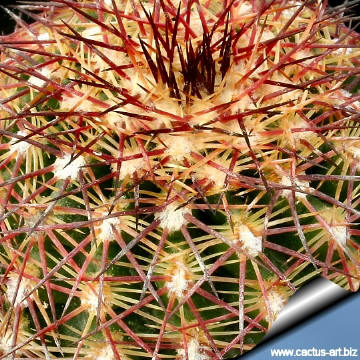 |
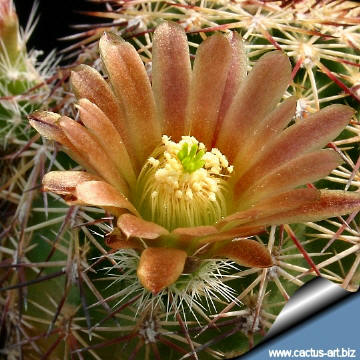 |
Description:
Habit: Usually grows singly or forms two or more stems , but
never forms large clusters or mounds.
Stems: as much as 7,5 cm in diameter and 15 (25) cm tall.
Spines: This species show the extreme variability in spine colour
(white, yellow, brown, reddish, black) some plants has only short
radials while other have a variable number of centrals.
Flowers: Smaller than others in this genus about 2,5 cm long and
2,5 cm inch broad. They vary from yellowish-green to dark-red or
brownish, and grow well down on the sides, often forming a band around
the middle. Blooms in March or April.
Fruit: The fruit is small about the size of a small grape, green
at first and later turning a purplish red and spiny.
Photo of conspecific taxa,
varieties, forms and cultivars of
plants belonging to the
Echinocereus viridiflorus
complex.
E. viridiflorus
is a compless that comprises a large number of
infraspecific
taxa, differing in various combinations of flower color, spine color,
number and thickness of central spines, and other characters, including
floral scent. Wherever such taxa are
sympatric they intergrade; all are freely interfertile in the
greenhouse. Among them:
-
E. viridiflorus var. viridiflorus: (Typical form)
With small stems and relatively pure yellow flowers, extends
from central New Mexico and the Texas Panhandle to South Dakota. (E.
viridiflorus var. robustior) is a more robust form but not
sufficiently differentiated and considered merely a local
variant of E. viridiflorus v. viridiflorus.
-
E. viridiflorus var. chloranthus (E. chloranthus) with the
most numerous central spines (five or more per areole), giving the
plants a bristly appearance, are often considered a separate species.
-
E.
viridiflorus var. russanthus (E. russanthus)
: Plants with a bristly appearance usually with reddish
or russet flowers. Yellow-spined plants may occur at high altitudes.
-
E. viridiflorus
var. cylindricus (E. chloranthus var.
Cylindricus) : The common morphotype at middle altitudes in
Texas and southeastern New Mexico has 0-2(-3) central spines.
-
E. viridiflorus var. correllii (E.
chloranthus var. Cylindricus "corellii") A poorly
defined, yellow-spined population near Marathon, Texas.
-
E. viridiflorus var. neocapillus (E.
chloranthus var. neocapillus): Remarkable for its softly
hairy, not sharply spiny, seedlings.
- E. chloranthus subsp. rhyolithensis
Bristly red-spined plants from New Mexico.
|
|
Echinocereus viridiflorus in the broad
sense may prove
paraphyletic with respect to
E.
davisii, but they are
phenologically isolated, with E. davisii flowering
earlier and thus appearing reproductively isolated in the wild.
Cultivation: In culture E. chloranthus v. cylindricus is without problems and regularly
shows its small greenish to brick-red coloured flowers if we provide an adequate winter
rest period. It is sensitive to overwatering (rot
prone) needs good drainage, Keep drier and cool in winter. Need full
sun; Very cold resistant hardy to -10° C or
less for short periods of time.
Propagation: Seeds or cutting (if available)
Advertising
|
|
|
|
|
Family:
Cactaceae (Cactus
Family) |
Scientific Name:
Echinocereus chloranthus v. cylindricus
(Engelm.)
N.P. Taylor
Origin: It is native from a narrow
band stretching from the Big Bend of Texas and Mexico to southern New
Mexico. El Paso habitat: mainly in the Franklin Mts.
|
|
Conservation status: Listed in
CITES Appendix II |
|
Common Name: Green-flowered
hedgehog, Green-flowered Pitaya
|
Synonyms:
Taxon
synonyms:
- Echinocereus viridiflorus v. cylindricus (Engelm.)
Ruempler
- Echinocereus viridiflorus ssp.cylindricus
(Engelmann) N.P.Taylor 1997
-
Echinocereus viridiflorus, Engelmann
1848
|
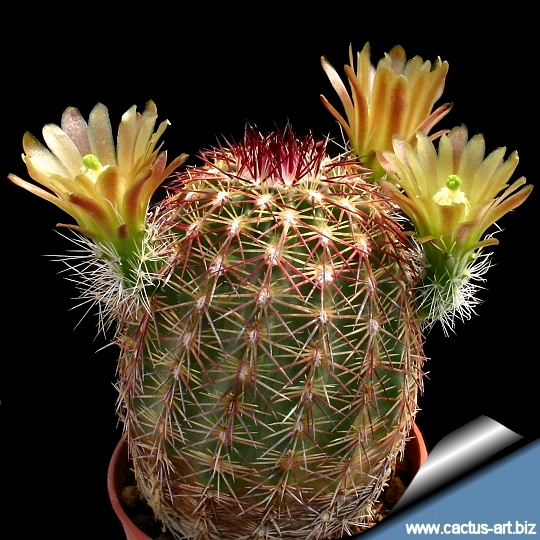
|
|
|
|
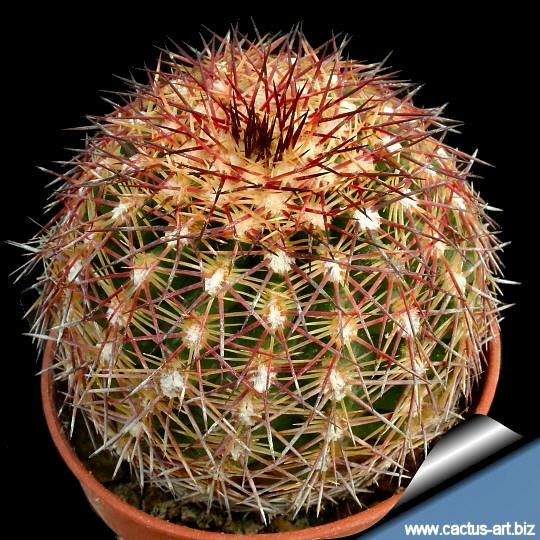
Echinocereus chloranthus v. cylindricus
SB378 Brewster County, Texas, USA


|
|